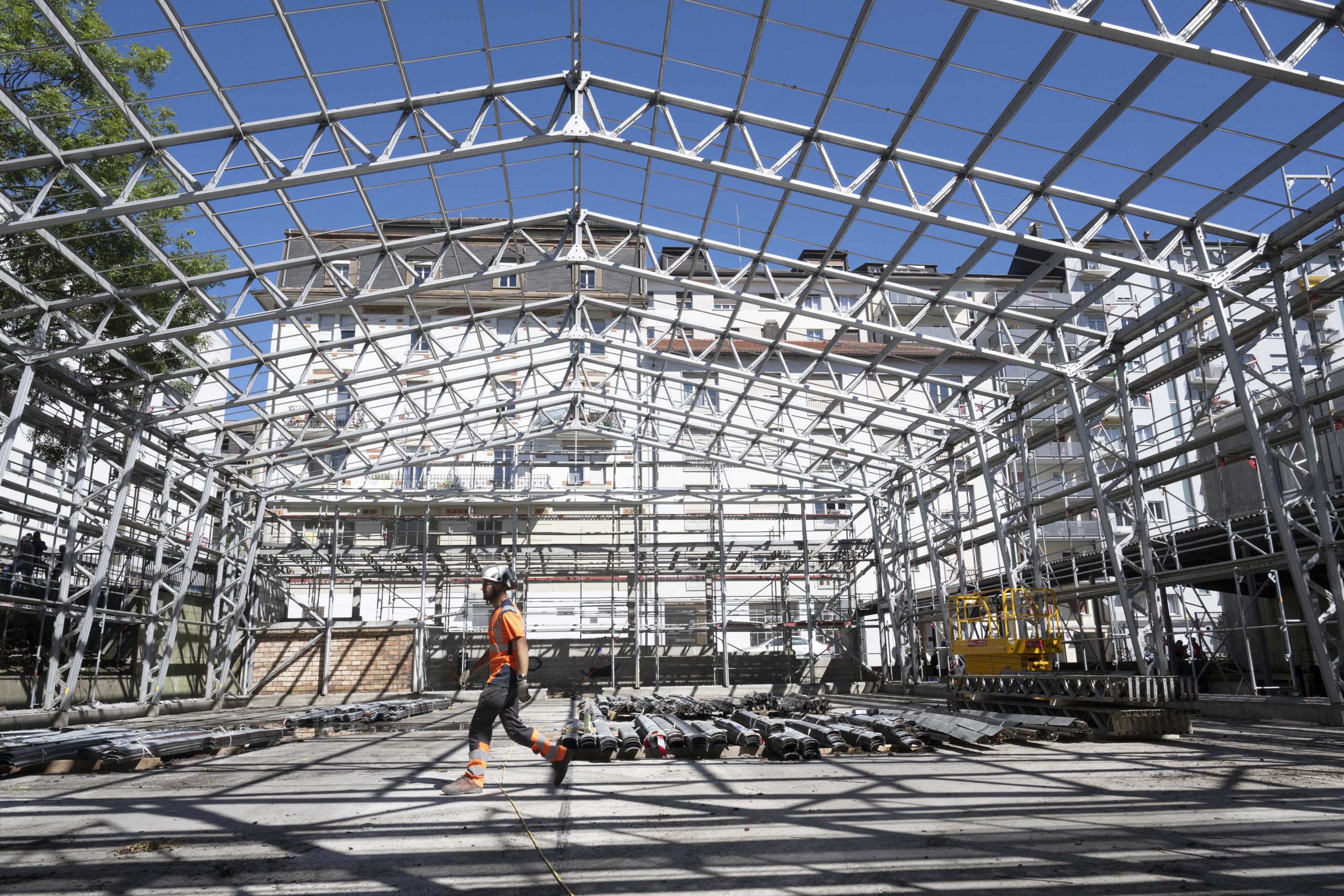Built in 1958, the former Polynorm warehouse was the ideal candidate for a pilot project that seeks to renovate and re-use an industrial facility in its entirety.

Construction and demolition waste accounts for two-thirds of all refuse generated in Switzerland. Of course, it is possible to recycle building materials and use them to build a new structure, but this process can be extremely energy-intensive. A more sustainable alternative is the reuse of the existing building or salvaged building materials for a similar purpose while altering the fabric as little as possible.
This age-old practice, which gradually fell out of favor during the industrial era, is now enjoying a revival of sorts, at least among the research community. The Fribourg-based POLYNORM project aims to demonstrate the potential of this approach by dismantling and reusing a load-bearing structure in its entirety.
“The POLYNORM industrial warehouse dates from 1958 and was slated for demolition. Its lightweight and highly innovative design makes it the perfect subject for a pilot study,” explains Agnès Collaud, a research associate at the TRANSFORM Institute, which initiated the project and is part of the School of Engineering and Architecture of Fribourg (HEIA-FR).
The project has attracted a great deal of interest from the building industry, including Morand Constructions Métalliques. The Fribourg firm is one of POLYNORM’s many partners and was responsible for dismantling the former warehouse’s metal load-bearing frame. According to Managing Director Jean-François Suchet, “We’re always looking for ways to reduce our environmental footprint. So, following the completion in summer 2022 of Switzerland’s first decarbonized steel structure which was produced entirely from recycled materials and renewable electricity, we were keen to take part in this project. It was an opportunity to make a name for ourselves in the reuse field and acquire deconstruction expertise.”
A role model
Although this approach is not especially cost-effective at the present time, Agnès Collaud believes that the explosion in energy and raw material prices could soon change all that, “Our primary objective was to develop a building deconstruction methodology and a large-scale reuse model, and in the process record the obstacles and levers we encountered along the way. Our experiment raises many questions about the way we plan our buildings.”
Metal is not the only material under the reuse spotlight. At the Smart Living Lab, the Structural Xploration Lab (SXL) and the TRANSFORM, iTEC and ENERGY institutes (as part of the ConcReTe project) hope to demonstrate the technical feasibility, environmental efficiency, and economic viability of reusing elements like slabs, walls, beams and columns which have been extracted from reinforced concrete structures. Corentin Fivet, director of the SXL laboratory, is delighted with the progress made so far, “Each new finding is more promising than the last.”
